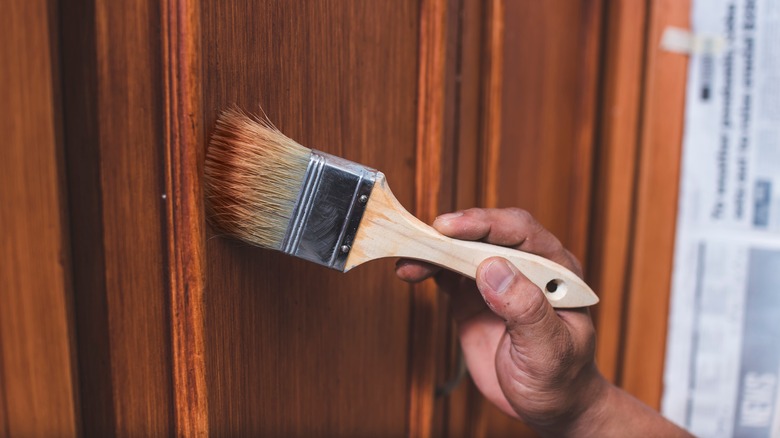What Happens If You Paint Cabinets Without Sanding Them First?
Before doing a paint job, it's crucial to know the surface you're working with so you can prep it properly first. This is why sanding is typically done before paint is applied to cabinets. Some people skip this step, though, as they see sanding as unnecessary or even hurtful to the wood, and they don't want to put in the extra time or effort. However, this is one mistake to avoid when painting cabinets because it will result in a poor final product. Just like walls need primer, cabinets need sanding so the paint can adhere to the surface properly.
A fresh coat of paint is a great way to refresh your cabinets and get a new look out of them. If you already have some paint and tools at home, this can end up being a fun project to spend a few hours on without spending a dime, so get things right the first time around. Sanding with a hand sander or sandpaper will roughen the surface up and smooth out any imperfections so the paint can go on smoothly.
Tips for sanding cabinets
Sandpaper is one of those tools that makes painting your kitchen cabinets much easier, especially when they have a rough surface like an old finish, peeling paint, or lots of scratches. It will take off the old layer and smooth out the damage so the cabinets become fresh canvasses to work with. If the marks are quite deep, expert painter Jan Walter recommends using some wood filler alongside the sandpaper before you start painting your cabinets.
When the holes are filled and the cabinets are all sanded down, wipe off the dust, and apply primer. If you're just applying a finish, no need to prime. If painting, sand again after priming to make sure the surface is completely flat and smooth. Now you can apply your paint. Note that sanding can take time based on what you're trying to remove. Getting rid of a very glossy finish, for example, could take a while.


